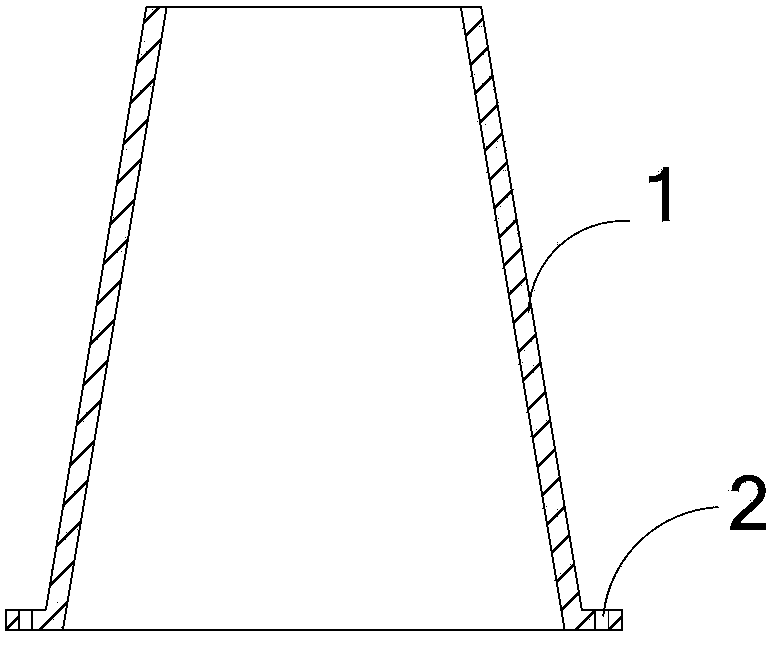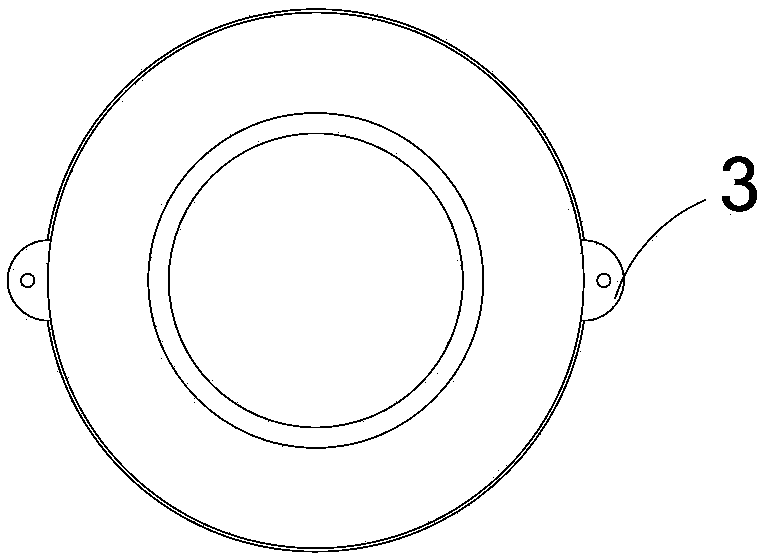Wind sand preventing and seedling protecting method suitable for desert areas
A technology for wind and sand prevention, applied in the fields of botanical equipment and methods, plant protection cover, climate change adaptation, etc., can solve the problems of low survival rate of seedling preservation, low survival rate of seedlings, etc. The effect of less investment
- Summary
- Abstract
- Description
- Claims
- Application Information
AI Technical Summary
Problems solved by technology
Method used
Image
Examples
Embodiment 1
[0020] Embodiment one: a kind of method that is suitable for desert area anti-wind and sand protection seedlings
[0021] A method suitable for protecting seedlings from wind and sand in desert areas to improve survival rate, the specific method includes the following steps.
[0022] (1) From mid-April to early June every year, after leveling the ground, use a tractor to lay capillary pipes and plastic film, with a row spacing of 1.5 meters to 3 meters. After the drip irrigation system is connected, drip water continuously for 12 hours. After 2 days, use a seeder to plant, with a hole spacing of 20 cm. , 6 seeds per point.
[0023] (2) The cup cover (1) is a bottomless cup-shaped body. The cup cover is made of paper, plastic or non-woven fabric with a light transmittance of 40%-50%. The cup wall of the cup cover (1) and the large cup The angle between the mouth planes is 77°-83°, the diameter of the large cup mouth of the cup cover (1) is adapted to the peripheral diameter of...
Embodiment 2
[0028] Embodiment two: a kind of method that is suitable for preventing wind and sand in desert area and improving the survival rate of seedling preservation
[0029] (1) From mid-April to early June, after leveling the ground, use a tractor to spread capillary tubes and mulch, with a row spacing of 1.5-3 meters. After connecting the drip irrigation system, drip water continuously for 12 hours. After 2 days, use a seeder to plant, with a hole spacing of 20 cm. There are 6 jujube seeds per point.
[0030] (2) The cup cover (1) adopts a bottomless cup shape. The cup cover is made of paper, plastic or non-woven fabric with a light transmittance of 40%-50%. The cup wall and the cup cover (1) are large cups. The angle between the mouth planes is 77°-83°, the diameter of the mouth of the large cup is adapted to the peripheral diameter of the seedlings with 7 true leaves, the height of the cup (1) is adapted to the height of the seedlings with 7 true leaves, the cup (1) Set cup cove...
Embodiment 3
[0035] According to the method described in Examples 1 and 2, a kind of method suitable for protecting seedlings from wind and sand in desert areas provided by the invention is applicable to jujube, pear, peach, almond, walnut, wolfberry, apple, grape, watermelon, melon, peanut, potato Economic crops such as Populus euphratica, Populus ash, Haloxylon and other trees, but not limited to these crops. The technology provided by the invention is to protect the seedlings of crops sown by seeds in desert areas, seed bulbs buried in soil, and seed stems unearthed from wind and sand, and the seedling preservation rate is over 90%. The cup cover directly blocks wind and sand, and protects the cotyledon, true leaf and growth point after unearthed. It has the characteristics of low investment and high survival rate of seedlings, and improves efficiency. After the strong wind passes, sand and soil may accumulate in the cup cover. It is necessary to check in time and remove the sand to pre...
PUM
 Login to View More
Login to View More Abstract
Description
Claims
Application Information
 Login to View More
Login to View More - R&D
- Intellectual Property
- Life Sciences
- Materials
- Tech Scout
- Unparalleled Data Quality
- Higher Quality Content
- 60% Fewer Hallucinations
Browse by: Latest US Patents, China's latest patents, Technical Efficacy Thesaurus, Application Domain, Technology Topic, Popular Technical Reports.
© 2025 PatSnap. All rights reserved.Legal|Privacy policy|Modern Slavery Act Transparency Statement|Sitemap|About US| Contact US: help@patsnap.com


